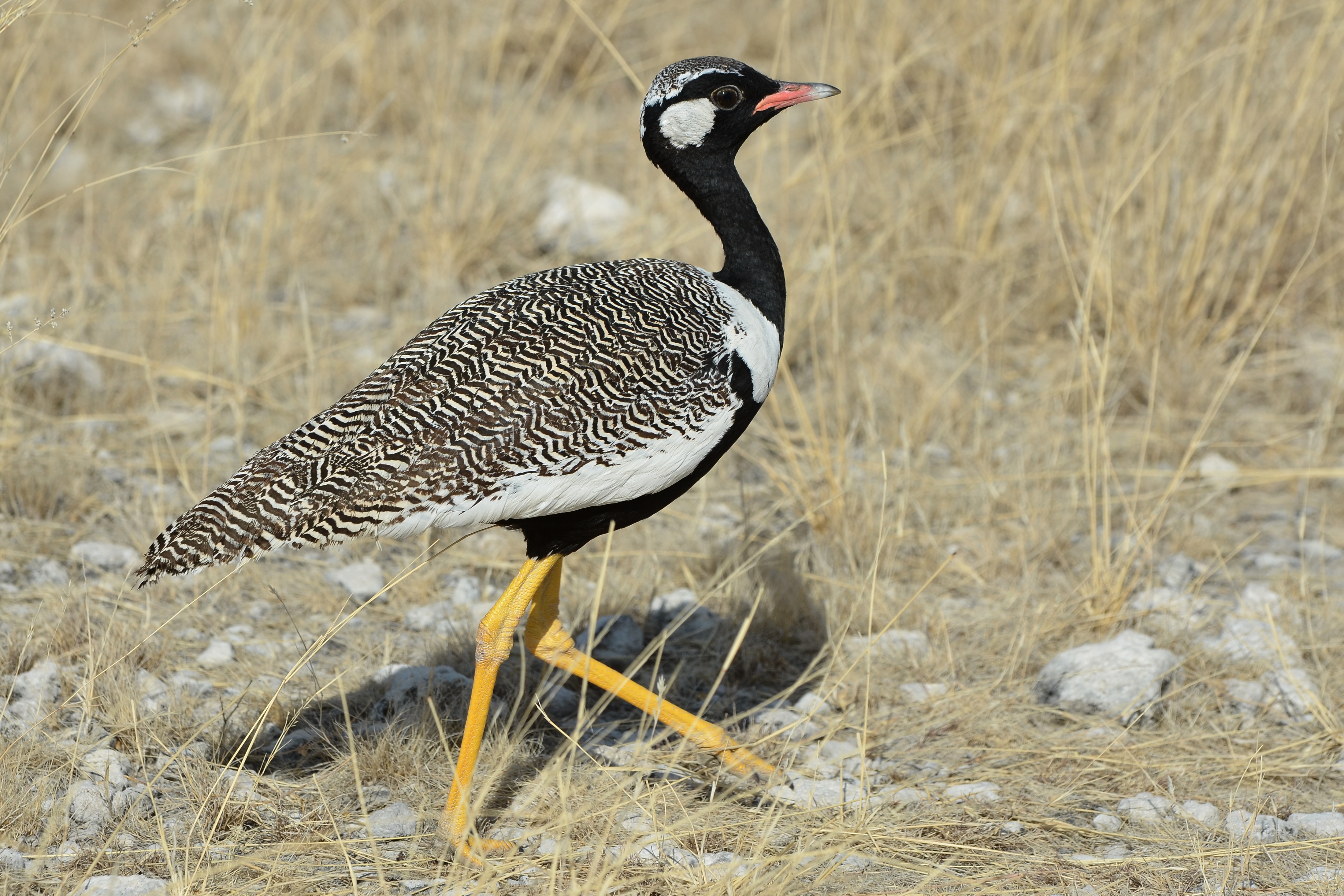
Afrotis afraoides
TAXONOMY
Otis afraпdes A. Smith, 1831, flats near Orange River. Three
subspecies.
OTHER COMMON NAMES
English: White-quilled korhaan; French: Outarde а miroir blanc;
German: WeiЯflьgeltrappe; Spanish: Sisуn Negro Aliclaro.
PHYSICAL CHARACTERISTICS
19.7 in (50 cm); 1.5 lb (0.7 kg). Black neck and underparts,
with gold and brown barred spot on crown, white collar behind
neck, and white ear-coverts. Wings and back barred dark
brown on whitish; white on primaries is conspicuous in flight.
DISTRIBUTION
A. a. etoschae: northwestern Namibia and northern Botswana;
A. a. damarensis: Namibia and central Botswana; A. a. afraoides:
southeastern Botswana through northern and northeastern
South Africa to Lesotho.
HABITAT
Flat grassland with sward of 19.7–39.4 in (50–100 cm), semidesert
scrub, grassy dunes, and arid savanna. Tolerates heavily
grazed areas.
BEHAVIOR
Generally solitary; males display on territories using stylized
flights accompanied by loud calling.
FEEDING ECOLOGY AND DIET
Variety of plant and animal material, including insects, seeds,
flowers, and leaves.
REPRODUCTIVE BIOLOGY
Breeds almost throughout year, but mainly September to
March. Lays one, sometimes two, eggs on bare ground. Incubation
period 19–21 days in captivity.
CONSERVATION STATUS
Not threatened. Common in most of range.
SIGNIFICANCE TO HUMANS
None known.
Other popular Animals
Photo Gallery of - White-quilled bustard
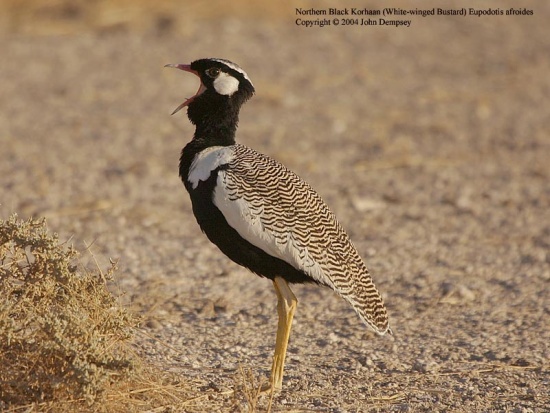
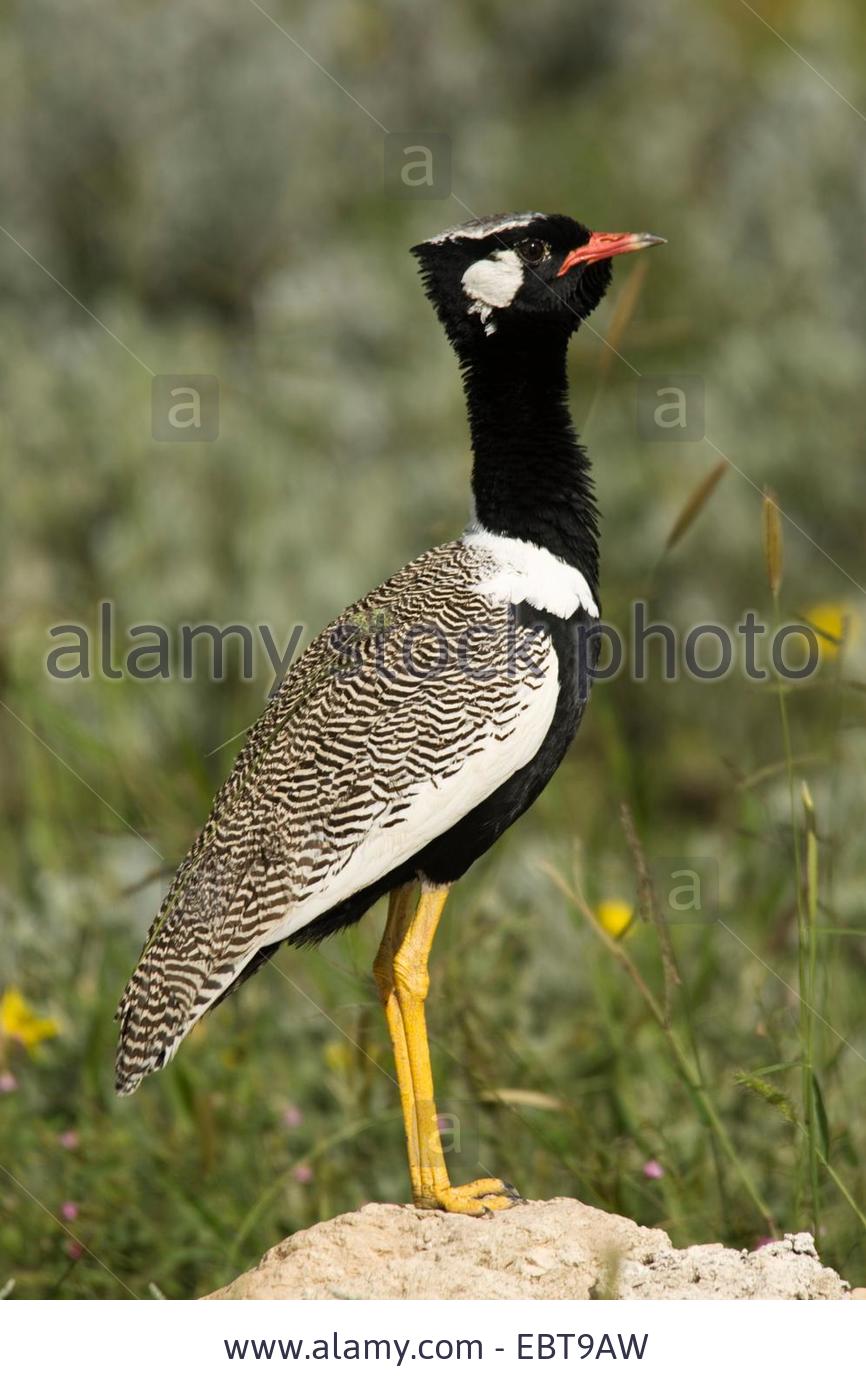
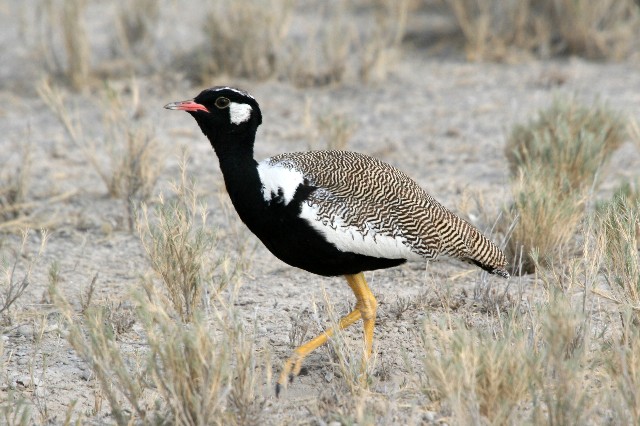
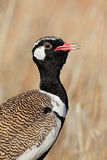
 Animalia Life
Animalia Life